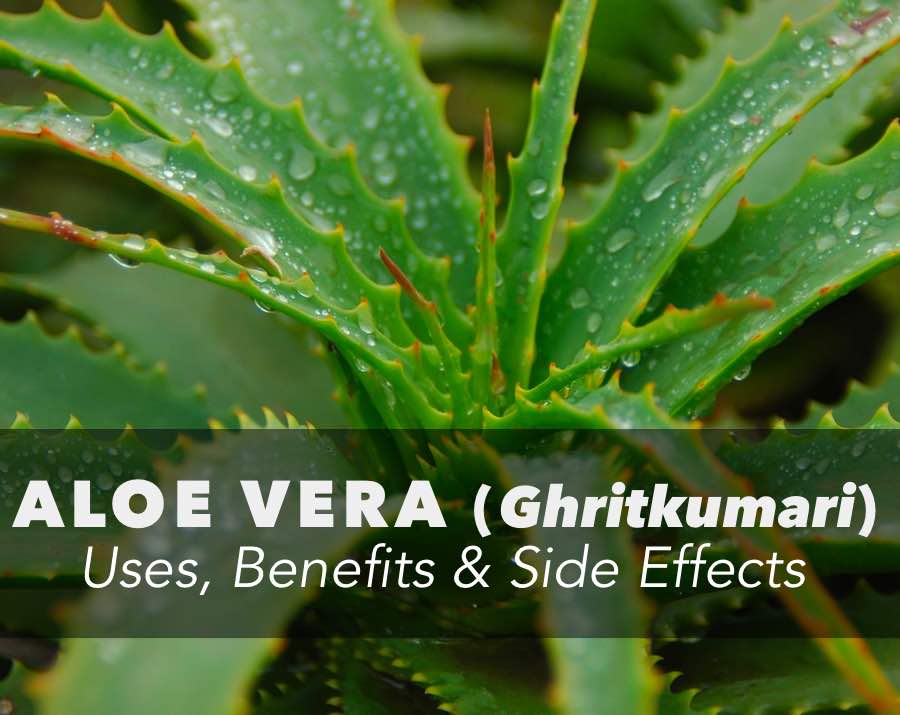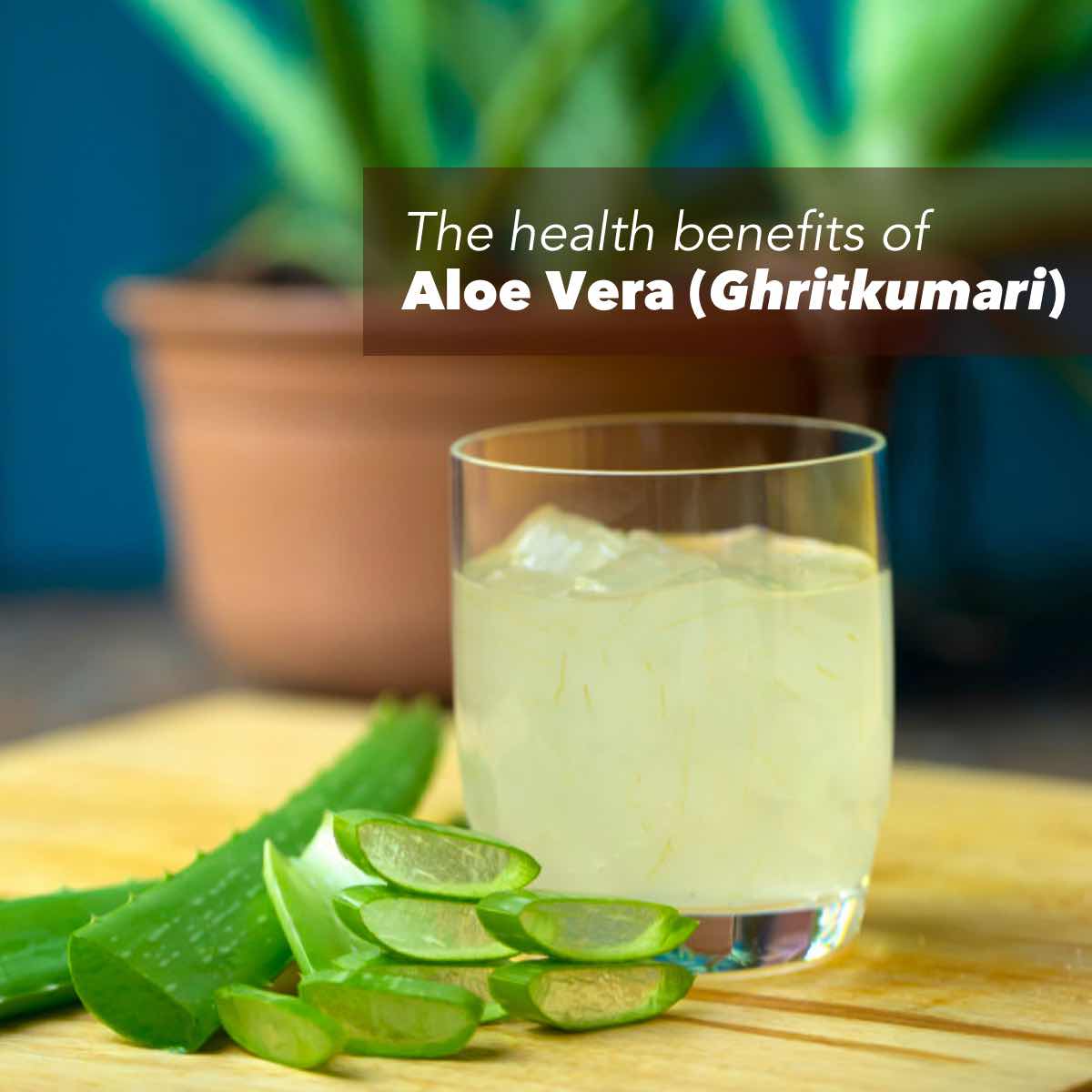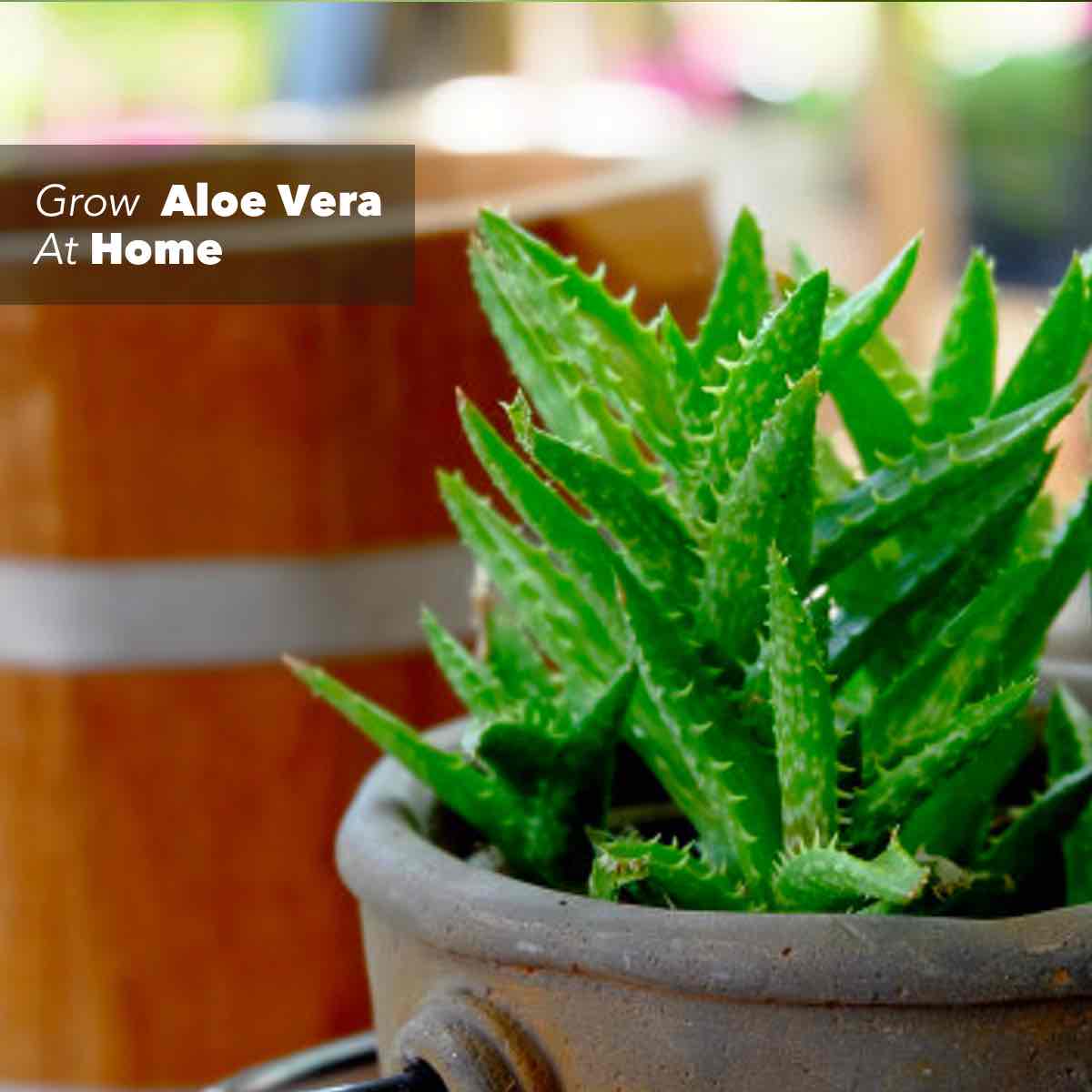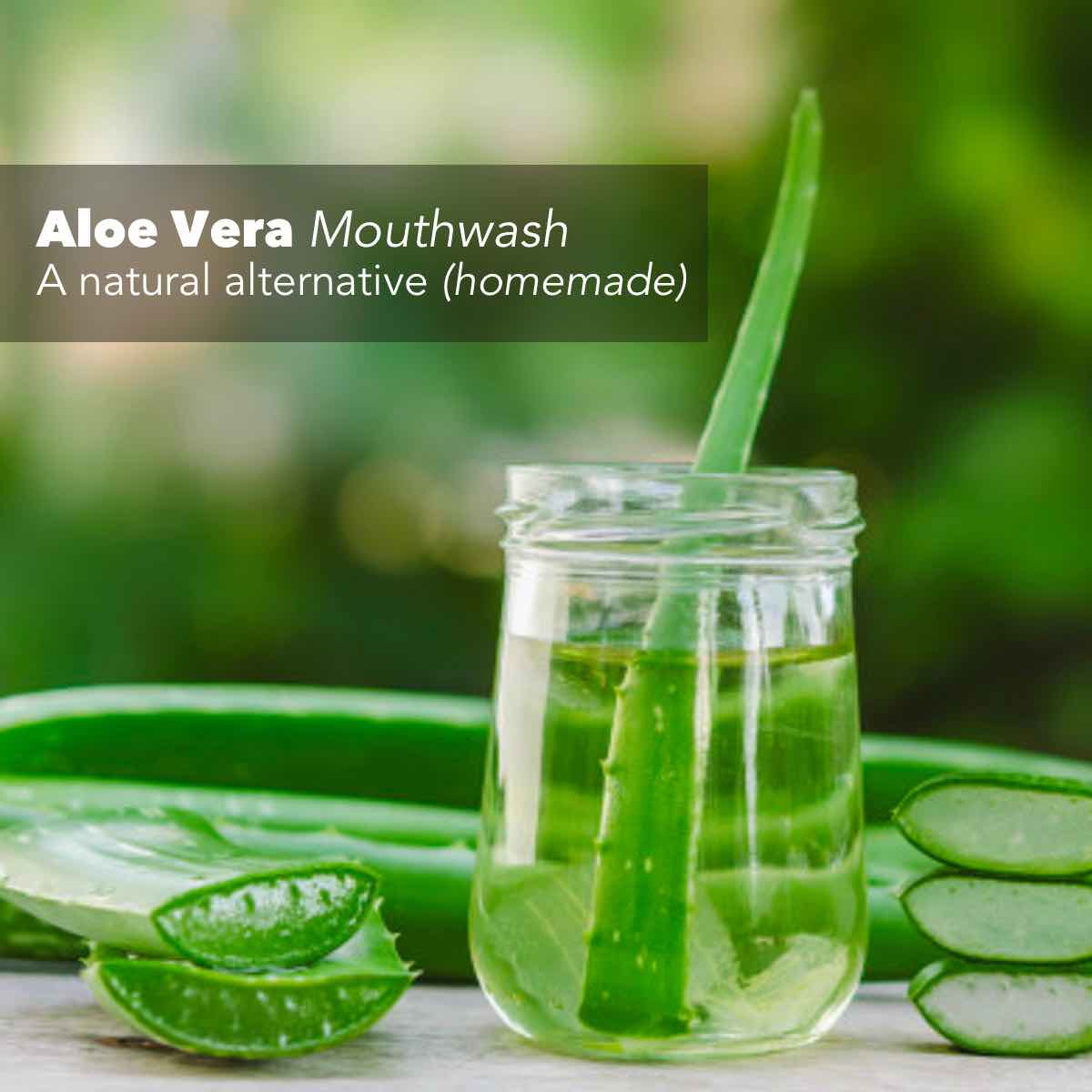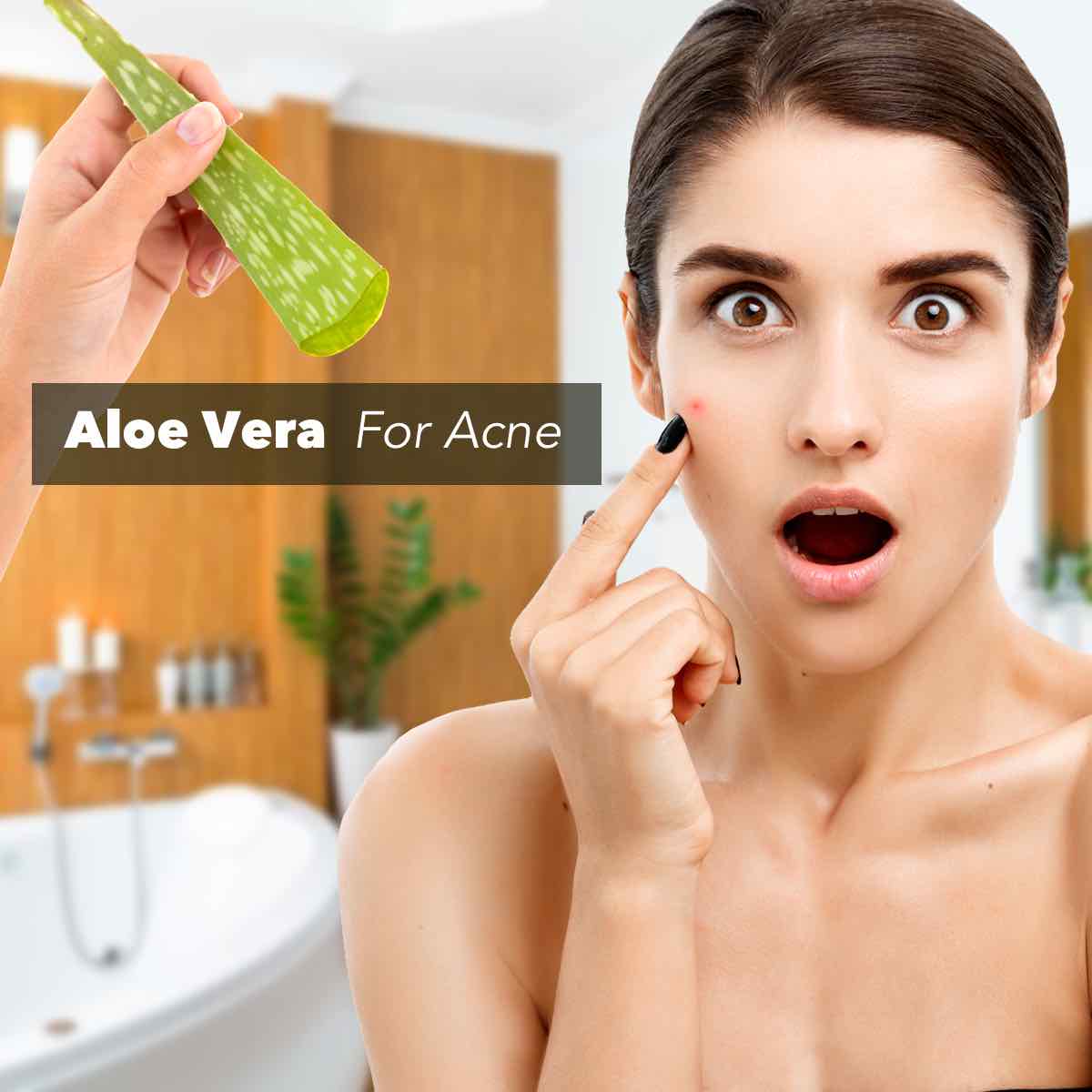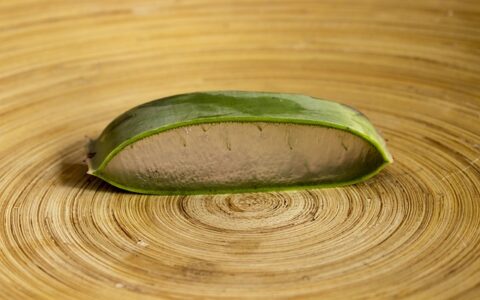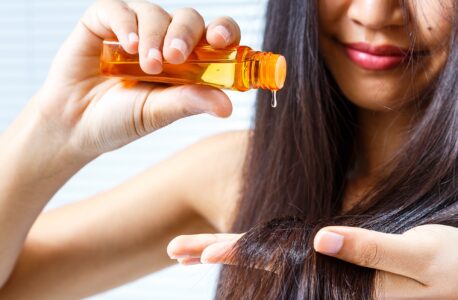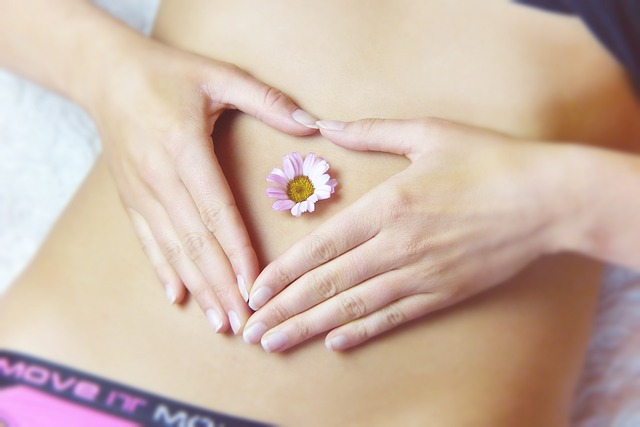The ancient Egyptians called aloe vera the “plant of immortality.” Pictures of the plant appear on ancient stone carvings from 6,000 years ago and were found offered as a burial gift for pharaohs. It is also used in traditional Indian medicine for constipation, skin diseases, worm infestation, infections and as a natural remedy for colic.
In hindi and among ayurvedic practitioners aloe is better known as “Ghritkumari”.
In Chinese medicine, it’s often recommended in the treatment of fungal diseases, and in the Western world, it has found widespread use in the cosmetic, pharmaceutical and food industries.
In fact, the manufacturing of aloe vera extracts is one of the largest botanical industries in the world.
So almost everyone knows that aloe vera has immense benefits. Chances are, you will find an aloe plant in the home of anyone who is health conscious.
Contents
The Aloe vera Plant
Aloe Vera, known as “ghritkumari” in India, is a cactus-type green plant with fleshy leaves. It is called ‘Kalabanda’ in Telugu, ‘Katralai’ in Tamil, ‘Kumari’ in Malayalam, ‘Lolisara’ in Kannada and ‘Koraphada’ in Marathi.
Legends say that it was even used by Queen Cleopatra in her beauty products. Ancient Mesopotamians and even soldiers in the army of Alexander the Great are also said to have used it.
Aloe is more common in hot, arid regions. The leaves produce two substances- the watery aloe gel, and the sap which is called aloe latex. Aloe extracts are not only good for your skin and hair, but also have a host of other health benefits.(1)
Growing Your own Aloe Vera Plant
Aloe vera is widely grown as an ornamental plant, since it requires very little maintenance and does not require much water. It is also a popular indoor plant. It grows best in dry conditions, and the plant cannot survive standing water.
To grow an aloe plant, it is best to mix equal parts potting soil, sand and gravel. This will prevent water from standing at the root. The plant also requires adequate sunlight.(2)
The plant has short roots and heavy leaves, so it is best to move the plant to a bigger pot after some time.
Aloe Vera Extract
Aloe yields two products: gel and latex. Most hair and skincare products that contain aloe extracts contain gel. However, in some cases, the entire leaf is crushed, which means both the sap and gel are used.
Making Your Own Aloe Gel and Aloe Juice
If you prefer to make your own aloe extract at home, best keep a potted plant. Otherwise, simply buy a couple of leaves from the local nursery.
To make aloe vera gel simply break a fleshy leaf and scoop out the gel with a spoon. You can break the solid chunks and mash it to create a gel consistency. You may also crush the leaves directly and apply the gel to the affected body parts.(3)
You can make aloe juice by taking store-bought aloe gel and mixing it in water or a beverage.
Otherwise, you can simple blend some leaves in a blender. It is very bitter, so it is better to mix it with some milk, fruit juice or honey to make it more palatable.
However, it must be remembered that aloe latex is unsafe for consumption. Buying aloe extracts or products from reputed brands or chemists is safer. It is risky to crush the leaves at home to make edible aloe juice. (4)
10 Proven Benefits of Aloe vera
Aloe vera has a number of benefits. Aloe is a wonderful and effective antiseptic, anti-inflammatory and antibiotic medicinal plant which contains 20 of the 22 amino acids and 7 of the 8 essential amino acids the human body requires.
1. Fighting Teeth and gum diseases
A study published in the General Dentistry magazine has shown that Aloe Vera in tooth gels is as effective as commercial toothpaste in fighting cavities. (5)
The researchers compared the germ-fighting ability of an Aloe vera tooth gel with two popular commercial toothpastes. They found that the gel was just as good, and in some cases even better than the commercial toothpastes at controlling cavity-causing oral bacteria.
Apparently the Aloe latex contains anthraquinones, which are compounds that actively heal and reduce pain via their natural anti-inflammatory effects.
However the researchers have warned that the aloe vera gel used must contain the stabilized gel that exists in the center of the plant to be effective.
An alternative to mouthwash
In a 2014 study published in the Ethiopian Journal of Health Sciences, researchers found aloe vera extract to be a safe and effective alternative to chemical-based mouthwashes. (6) The plant’s natural ingredients, such as vitamin C, can block plaque. The anthraquinones in aloe can also provide relief if you have bleeding or swollen gums.
Being anti-vrial and anti-bacterial, aloe vera is an effective cure for many dental and mouth infections. It is effective in treating gingivitis, and reduces plaque accumulation.
Aloe helps reduce herpes and mouth ulcers. It also soothes the area around dentures.
Research shows that aloe is effective in treatment of itchy rashes in the mouth called “lichen planus”. Using mouthwashes containing aloe help heal these rashes faster.(7)
The other superfood – Moringa. Read More.
2. Has Antioxidant & Antimicrobial Properties
It has been shown in many studies that Aloe Verato is antibiotic, anti-fungal and antimicrobial, even against some of the most virulent infections, such as E. coli, E. faecalis and staphylococcus aureus, the Journal of Conservative Dentistry reports.
Researchers at the University of Las Palmas de Gran Canaria, Spain, published a study in the journal Molecules. The scientists studied whether the methanol extract of leaf skins and flowers of Aloe vera might have any beneficial effects on the human health. The scientists focused on the possible antioxidant and antimycoplasmic activities of the skin and flower extract.
Mycoplasma is a type of bacteria that lack a cell wall; they are unaffected by most common antibiotics. Antimycoplasmic substances destroy these bacteria.
The researchers reported that aloe flowers and especially the skin of the aloe leaf contains antioxidant properties. Infact the leaf skin also showed antimycoplasmic properties.(8)
3. Can Relieve Constipation
Germany’s regulatory agency for herbs – Commission E – approved the use of Aloe vera for the treatment of constipation. Dosages of 50-200 milligrams of Aloe latex are commonly taken in liquid or capsule form once daily for up to 10 days.
According to the mayo clinic, while aloe latex acts as a laxative, too much or when taken for too long can also lead to abdominal cramps and diarrhea.(9)
The US FDA however is not convinced, and has disallowed aloe products from using claims of relieving constipation citing lack of enough data and evidence.
Castor oil is another effective natural treatment for constipation.
4. Heal Wounds from second-degree burns
A team of plastic surgeons compared Aloe vera gel to 1 percent silver sulphadiazine cream for the treatment of second-degree burn wounds.
The study, published in the Journal of Pakistan Medical Association found that aloe vera gel promoted wound healing in second degree burn patients significantly quicker than SSD cream. The mechanism of the remarkable efficacy of aloe cream in the healing of burn injuries may be explained by its cell proliferation, and anti-inflammatory effects.(10,11)
It is also effective in treatment of cuts, wounds and all kinds of skin burns including sun burns. Besides that, aloe vera also helps break down scar tissue faster and reduce scarring.(11)
5. Treats diabetes
Studies on humans and animals suggests that aloe vera has anti-diabetic and glycemic control compounds.(12,13) They found that aloe vera juice is able to alleviate hyperglycemia and disturbed lipid profile that are some of the problems associated with diabetes and are major risk factors for cardiovascular complications for diabetic patients.
In one particular study 72 diabetic women without drug therapy were administered 1 tsp of Aloe vera gel or placebo for 6 weeks. Blood glucose and serum triglyceride levels were significantly decreased with Aloe vera treatment.
In the second study the effects of Aloe vera gel or placebo in combination with glibenclamide (a commonly prescribed antidiabetic medication) were investigated, again resulting in significant reductions in blood glucose and serum triglyceride concentrations in the Aloe vera group. (14)
However people with diabetes, who take glucose-lowering medications, should use caution when consuming aloe vera. The aloe juice along with diabetes medications can lower your glucose count to dangerous levels. Working with your health care provider or an ayuvedic practitioner can help avoid such problems.
6. Treat Diabetes-induced foot ulcers
A study carried out at the Sinhgad College of Pharmacy, India, and published in the International Wound Journal investigated the efficacy of a formulation made of carbopol and Aloe‘s ability to treat ulcers.(15)
The researchers reported that a “gel formed with carbopol 974p (1 percent) and Aloe vera promotes significant wound healing and closure in diabetic rats compared with the commercial product and provides a promising product to be used in diabetes-induced foot ulcers.”
7. Benefits of Aloe vera For Skin
You can use aloe vera to keep your skin clear and hydrated. Aloe vera gel can be directly applied to skin. Aloe is a popular ingredient an all kinds of skin care. Here’s why:
Treats Acne
Aloe gel is a go-to remedy for acne. Most pharmaceutical and cosmetic products for acne treatment contain aloe extracts. Research shows that the anti-bacterial and anti-inflammatory properties of aloe are effective in treatment of acne and subsequent healing of wounds.(16)
Research suggests that applying an aloe gel in the morning and evening, improves acne by about 35% in both children and adults. The hydrating aloe vera gel may also reduce the frequency and appearance of acne.
Helps In Psoriasis
Applying aloe extract for 4 weeks seems to reduce the skin plaques in patients suffering from psoriasis. Aloe gel seems to decrease the severity of psoriasis better than the corticosteroid triamcinolone. However using an aloe gel does not seem to improve all symptoms associated with psoriasis. For instance aloe does not bring much changes in skin redness in psoriasis.(17)
It may also help reduce other skin conditions like dermatitis.
8. It’s Super Nutritious
Aloe vera is an antiseptic, anti-inflammatory, antibiotic and an immune booster.
It contains 20 of the 22 amino acids and 7 of the 8 essential amino acids that the human body requires. Here’s the list:
- Anthraquinones — Aloe vera contains 12 kinds of anthraquinones, which are phenolic compounds that function as laxatives. Anthraquinones also work as analgesics, antibacterials and antivirals.
- Fatty Acids — Aloe has four kinds of plant steroids: cholesterol, lapel (known for its analgesic, antiseptic and anti-inflammatory properties) campestral and β-sis sterol.
- Enzymes — Aloe vera has 8 enzymes: aliiase, amylase, catalase, carboxypeptidase, lipase, alkaline phosphatase, cellulase, peroxidase and bradykinase (a topical anti-inflammatory agent), .
- Vitamins — Vitamins B12, A (beta-carotene), E and C are present in substantial quantities followed by folic acid and choline.
- Minerals — Aloe also has a plethora or minerals such as chromium, magnesium, calcium, zinc, copper, manganese, selenium, sodium and potassium. These play essential roles in the human body’s metabolic pathways.
Drinking aloe vera juice is an excellent way to make sure that you get enough nutrients.
Aloe vera is one of the rare plant sources of vitamin B-12, too.
Take note vegetarians and vegans!
9. Anti-ageing Properties of Aloe vera
There is scientific evidence that use of aloe vera on skin increases collagen production. Aloe stimulates fibroblast which produces the collagen and elastin fibers making the skin more elastic and less wrinkled.
It also makes skin softer, since it has excellent hydrating properties. It acts as a moisturizer for dry skin. Application of aloe tightens pores.
Aloes gel acts as an astringent too. Most products for oily or sensitive skin include aloe. Aloe vera is good for maintaining skin balance.
10. Uses of Aloe Vera For Healthy Hair
Aloe vera has hydrating and soothing properties. Applying aloe vera to the scalp can get rid of itchiness and fungal infections.
Aloe vera can also help condition hair and stimulate hair growth . Cosmetologists say that aloe increases elasticity of hair and reduces breakage, thus reducing hair fall.(18)
Aloe vera Oil Therapy for Healthy Hair at Home
You can directly apply the gel to scalp. Otherwise, mix aloe gel with coconut oil and apply it to scalp and hair to get good conditioning and a healthy shine.
Other Health Benefits of Aloe Vera Juice
Apart from applying aloe topically, aloe extracts or medicines containing the same can be ingest orally for a number of health benefits.
Aloe Juice for Good Digestion
Aloe latex is very effective against constipation. It increases water content in the intestine and increases mucus secretion. This makes it a potent laxative. Drinking aloe vera juice helps fight constipation.
Anti-tumour/ Anti-cancerous Properties of Aloe Vera
Though it is not used in treatment of cancer, studies with mice show that aloe vera has an adverse effect on tumor growth. It also accelerated destruction of tumors, and helped generate cancer-preventing enzymes in the body.(19)
In many cases, patients undergoing chemotherapy or radiation burns also use aloe gel. However, studies in this area remain inconclusive.
Aloe vera juice for Weight Loss
Research suggests that one specific aloe-rich product- Aloe QDM complex, Univera Inc., Seoul, South Korea- aids weight loss. After ingesting twice daily for eight weeks, this product was claimed to reduce body weight and fat mass in overweight or obese people with diabetes or prediabetes.
However, not much evidence exists to support this claim.
Aloe Vera Uses
A number of medicinal, pharmaceutical, cosmetic and dietary products contain aloe in some form. It has widespread use in traditional medicine too. It is a common ingredient in astringents, facial creams, shampoos, incense sticks, make up, soaps, shaving creams and tissues. You can even make DIY face packs and hair tonics with aloe vera.
Aloe Vera Side Effects
Though considered a miracle cure, there are many side effects of aloe vera. Under California Proposition 65 guidelines, orally ingested non-decolorized aloe vera leaf extract has been listed among “chemicals known to the state to cause cancer or reproductive toxicity”.(20)
While topical application of aloe gel or products has not shown any harmful effects, oral ingestion of aloe can be a cause of concern. Since aloe is a potent laxative, careless dosage may result in diarrhea. Pregnant women or people with sensitive digestion should not take aloe extracts orally.
Aloe latex has laxative properties. Use of laxatives is linked to dehydration and reduction of potassium levels in the body.
Laxatives can also affect rate of absorption of medicines by the body. Aloe latex can affect kidney and liver functions, according to some studies.
Aloe also interacts with sevofluran, a substance is used in anesthetics. Patients should avoid taking aloe orally at least two weeks before undergoing surgery.(21)
Aloe Dosage
It is best to consult with a doctor while determining oral dosage of aloe. Usually, dried aloe latex is used for treating constipation. For adults, the amount prescribed varies from 100mg-200mg per day.(22)
Conclusion
Remember, products which use the whole aloe leaf contain both aloe gel and aloe latex. It is thus extremely important to check product ingredients before using oral aloe supplements or aloe juice. Consult a doctor before taking any aloe products orally.
Aloe Vera FAQs
What is Aloe vera?
Aloe vera is a plant found in dry regions. It has green fleshy leaves. It grows widely in India. Aloe vera is known for its medicinal values. In India it is widely known as “ghritakumari” and is a common ingredient in traditional medicine.
What is aloe vera called in India?
Aloe vera is called “ghritumari” in Hindi, ‘Kalabanda’ in Telugu, ‘Katralai’ in Tamil, ‘Kumari’ in Malayalam, ‘Lolisara’ in Kannada and ‘Koraphada’ in Marathi.
How to grow aloe vera at home?
Alow vera can be easily grown at home in a pot. It is a popular indoor plant. It requires adequate sunshine, but cannot grow in standing water. Use soil mixed with sand and gravel.
How to make aloe gel at home?
Break a fleshy leaf and scoop out the gel with a spoon. You can break the solid chunk and mash it to apply it topically. If you want to apply aloe gel to inflamed skin or burnt areas, you can keep it in the fridge to cool it, which can soothe your skin.
How to make aloe juice at home?
Break a leaf, crush it in a blender. Mix it with milk or fruit juice and drink. It is very bitter. It is, however, not advisable to make it at home.
What are some skin benefits of aloe vera?
Aloe vera fights acne, soothes burns and cuts, reduces scarring, has anti-ageing properties and maintains moisture balance for skin. It is very effective for oily skin.
What are the hair benefits of aloe vera?
Aloe vera can soothe scalp itchiness and condition hair. It can reduce hair fall. It forms a protective layer around the hair which reduces dryness and prevents breakage. At the same time it can prevent scalp infections.
Does aloe vera reduce blood sugar levels?
No medical evidence exists to support this claim. Diabetes is a serious issue. Please consult your doctor before doing any self-medication or eating something.
Is it good to drink aloe vera juice?
Aloe juice is a laxative, so it is useful for those who suffer from constipation. However, you must consult a doctor before doing so.
Are there any side effects of aloe vera?
Overdose of aloe juice can cause diarrhea. Aloe vera also interacts with some anesthetics, so it is best not to drink any aloe juice at least for two weeks before scheduled surgery. Talk to your doctor or surgeon in this regard.
Is it safe to drink aloe juice?
The best thing to do is to buy aloe juice from reputed brands and chemists. You can make your own aloe juice at home, but since aloe latex is a potent laxative, it is better to go for trusted brands who can find the right balance of nutrients and compounds for the product.
What are the uses of aloe vera?
Aloe vera is widely used in cosmetics, skin care products, shampoos, medicines and soaps. It is also used in a number of home remedies- like in face masks, hair masks, astringents, mouthwash and in treating burns and wounds.
References:
- Aloe WebMD
- The Health Benefits And History Of Aloe Vera Huffington Post
- The Alternative Medicine Cabinet: Aloe Vera for Burns NY Times
- Side Effects & Safety WebMD
- Healing power of aloe vera proves beneficial for teeth and gums, eurekalert.org
- Effect of Aloe vera topical gel combined with tretinoin in treatment of mild and moderate acne vulgaris: a randomized, double-blind, prospective trial NCBI
- The Review on Properties of Aloe Vera in Healing of Cutaneous Wounds NCBI
- Uses & Effectiveness WebMD
- Why You Should Be Using Aloe In Your Hair Care Routine Huffington Post
- Aloe Vera in Dentistry NCBI
- Aloe Vera: A Short Review NCBI
- Chemicals Listed Effective December 4, 2015 as Known to the State of California to Cause Cancer: Aloe Vera, Non-Decolorized Whole Leaf Extract and Goldenseal Root Powder OEHHA
- Possible interaction between sevoflurane and Aloe vera NCBI
- Some Drugs and Herbal Products NCBI

